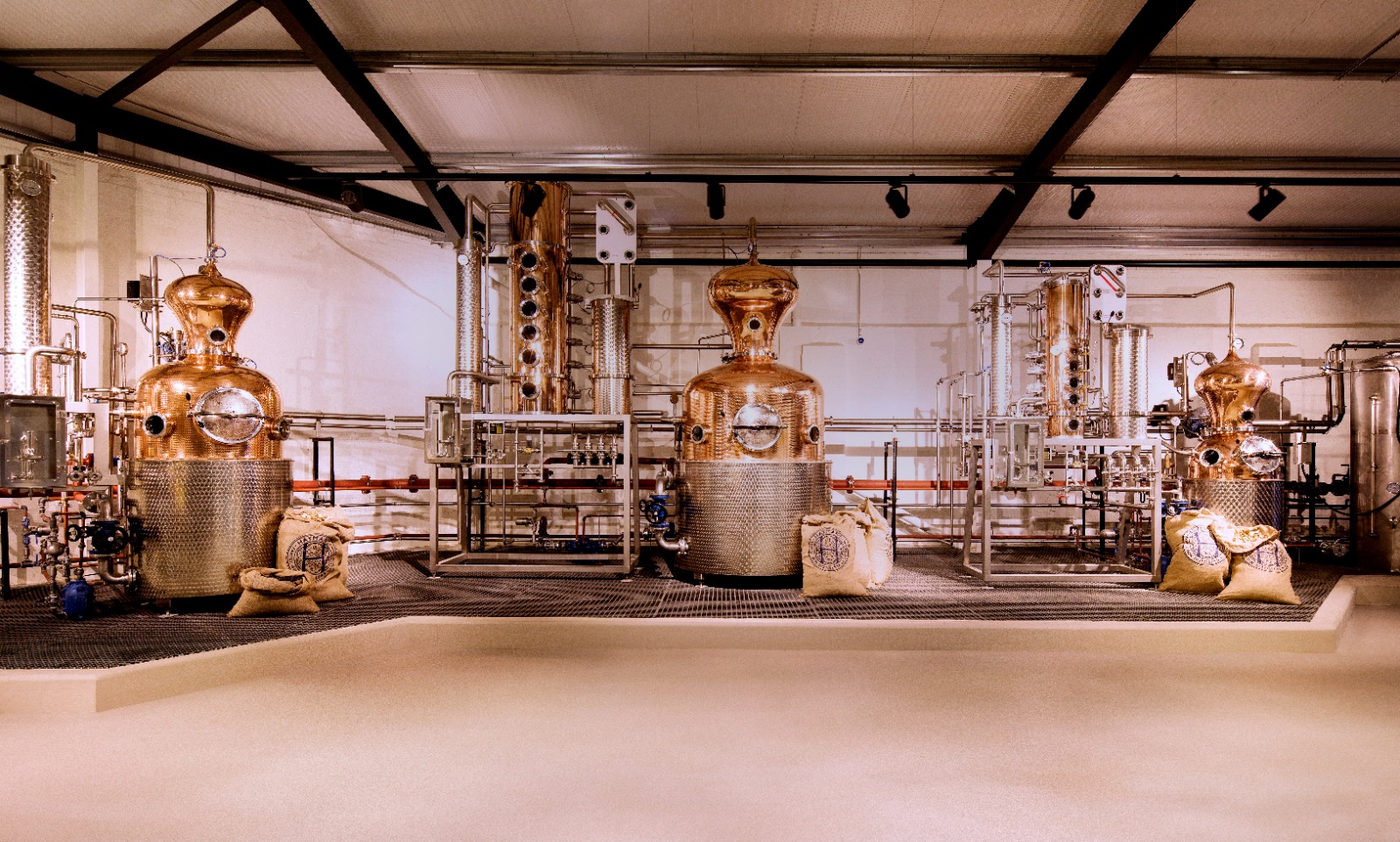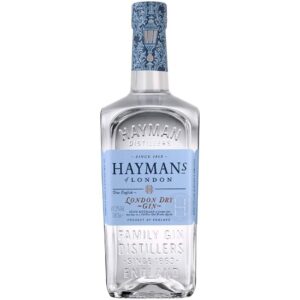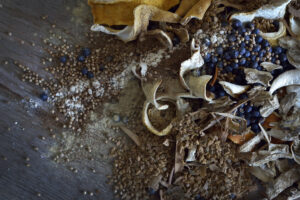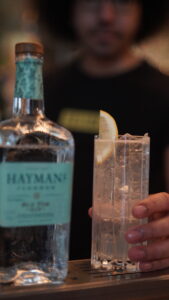
20 Apr Hayman’s gin: familiesages in the bottle
Some brands make up a story.
Some brands are all story.
But with Hayman’s gin, the gin tells the story.
by Gandor Bronkhorstphotography Albert van Beeck Calkoen/Hayman’s
Grandpa Hayman still rode his bicycle to the distillery, says Miranda Hayman, fifth-generation London gin makers.
She and her brother James run the business, and together they make gins from every era the family has gone through.
 Best known is the London Dry (41.2%), a classic gin with plenty of juniper and citrus notes.
Best known is the London Dry (41.2%), a classic gin with plenty of juniper and citrus notes.
Yet the flavors are classic British restrained: as gin should be.
Ten botanicals are used, no more and no less.
Miranda is particularly proud of the role the coriander seed plays in their distillate.
‘This really is the unsung hero in our gin’.
The other flavorings are licorice, angelica root, nutmeg, cinnamon, cassia bark, orris root and dried lemon and orange peels.
The recipe, of course, comes from the Hayman family recipe book.
‘We have our recipes and our history. Those are very important to us. We always stick to that, even when we try something new.’
Gin Palaces
A fine example is the brand-new Gently Rested Gin (41.3%), which has been aged very briefly (just three weeks) in old Scotch whisky casks. Not because that’s the trend, James assures us, but because that’s how the gin used to be drunk in London’s gin palaces. ‘When my grandfather still worked at the distillery, he worked with wooden barrels. Not for the taste they gave off, but because the gin was transported in them. Steel tanks came later. The gins drunk in the legendary London ‘Gin Palaces’ in the nineteenth century , always had a very small amount of wood. We tried to imitate that, but of course to the taste of today.’
An effort that succeeded wonderfully, we taste.
A touch of wood brings out not only citrus flavors, but peppery notes.
Miranda: ‘ A very smooth gin, indeed.’
Tom cats
Another legendary era in London gin history, is that of the Tom Cats, in the second half of the nineteenth century.
In other words, the time when gin was not as stable a quality as it is today.
Anyone on the street who had a

encountered effigy of a black cat at the window, could make his thirst clear with some mysterious cat language.
When your meowing was answered with the same sound, from a trunk inside the cat could expect a shot of gin at a handsome price.
The style gin of the time is called Old Tom, and is one of the London distiller’s specialties.
The Old Tom has the same botanicals as the London Dry, but a larger amount.
A touch of sugar is also added to make the taste even fuller.
Hayman’s Old Tom Gin is therefore distilled to an original
family recipe from the 1970s.
So yes, what better to use it for than classic gin cocktails like the Martinez and the Tom Collins….
Cale street
The current generation of Hayman is the fifth at the helm of the company that was founded in Chelsea in 1863, though initially under a different name: James Burrough.
This was the great-grandfather of Christopher Hayman (the father of Miranda and James).
Burrough was originally a pharmacist who bought out a liquor company in 1863.
This company experienced unprecedented growth and was sold in the 1980s.
Christopher Hayman, angry and disappointed, bought back a small division of it – and continued that part of the business in the family tradition.
In an earlier interview, he recounted his motivations.
‘When I was growing up, that I would become an accountant, just like my father. It wasn’t until my senior year of college that I was among the boilers, and I always felt at home there. When the family business was sold, I felt I should continue that part of the family tradition. We work with a family recipe, so we change very little. The only ones who can change a recipe are James, Miranda and me.’
See all bottles of Hayman’s gin here.
Family Recipes
What makes it special is that since then it has not only stuck to the same family recipe, but also followed the history of gin in London.
Thus, each gin in the portfolio represents a particular period in the history of gin.

Hence, another hidden gem from the cauldrons of Hayman’s.
And then there’s a very special kind of gin that perhaps not everyone knows: Sloe Gin.
A sweet-sour-bitter drink based on gin and sloe berries, or blackthorn berries (which, contrary to what the name suggests, are not berries, but very small plums).
These are used with pith and all during distillation, so you can even taste some almond notes in them.
Sloe gin is a big unknown in the Netherlands, and honesty dictates that we may not be used to these flavors either.
Still, the product is a great balancing act in the kettles: just enough sweet, sour, gin and even some bitter.
A great tip of the house: use these once in a Negroni.
James Hayman seems to have one every Friday at the end of the work week.
Read all about the history of the Negroni here

Women and cauldrons
After that first spot in Chelsea, the distillery moved to the other side of the Thames.
Initially in the south-west, near the iconic Battersea Power Station.
Today, Hayman’s is located in Balham, which is a little further south.
During a tour, James talks about the kettles, each named after women in the family.
The oldest is Marjorie, named after James and Miranda’s grandmother.
Their mother also has her own cauldron: Karen.
Miranda herself has a cauldron named after her, and James’ daughter is also named: Clodagh.
And that small circle is typical of this company.
In case you have noticed that this 157-year family history is mostly set in England, you have seen it well.
The story of Hayman’s gin is not exactly modern and cosmopolitan, this is the story of true English gin.
Gebalanceerd, klassiek en genuanceerd.
Hayman’s wordt dan ook nog altijd op de traditionele manier gemaakt: in een traag, tweedaags distilleerproces.
In de woorden van Miranda: ‘dit doen we niet alleen omdat we zijn blijven hangen in het verleden. We doen dit omdat het simpelweg een betere drank oplevert.’
TIP: Read how to make a great Martini here
True taste
At the end of the conversation, Miranda talks about her family’s drinking habits and what the perfect gin-tonic should taste like.
Her father, she explains, swears by a gin-tonic without garnishes.
“He wants to taste the subtle notes of the gin.
And indeed, with such a cleverly made, nuanced and balanced, classic gin, you really don’t need any garnish.
The dried orange peels from Spain, the juniper, the coriander and even the licorice … the flavors of Hayman’s no longer need any frills.
157 years of family history adds all the complexity and depth you need in a good gin.

For more information see haymansgin.com and The Monk



No Comments